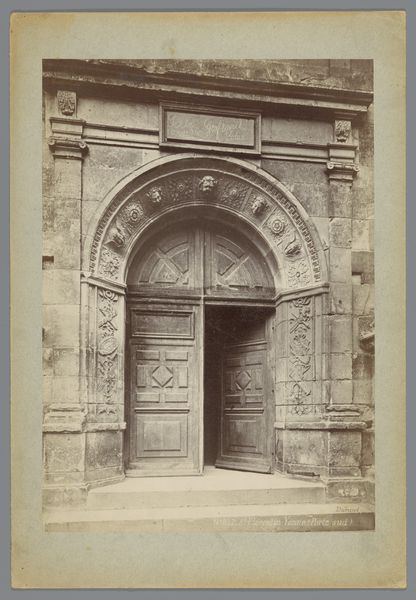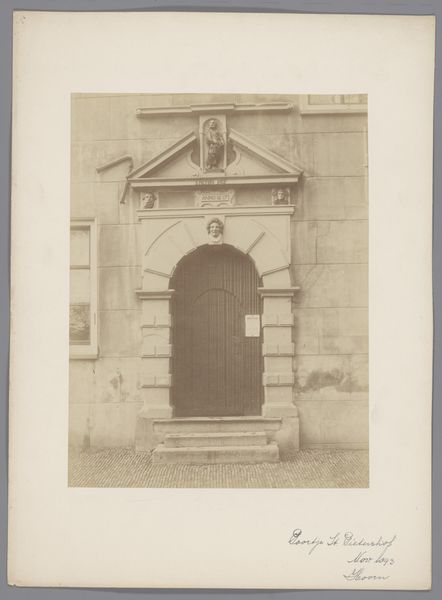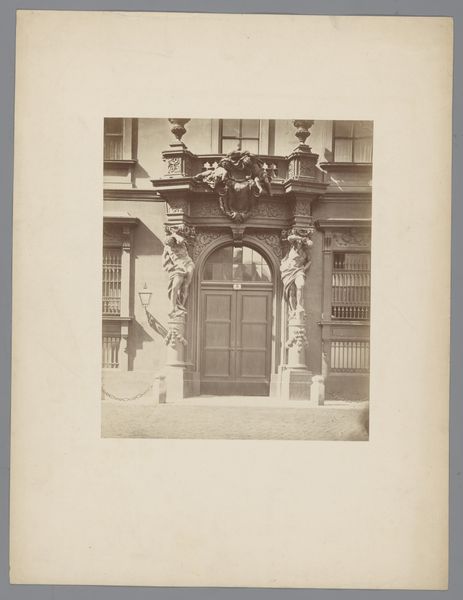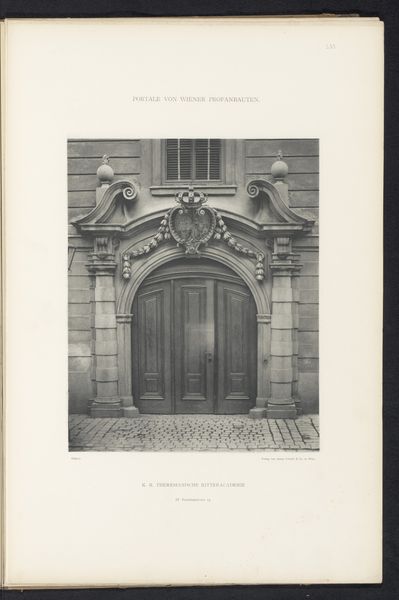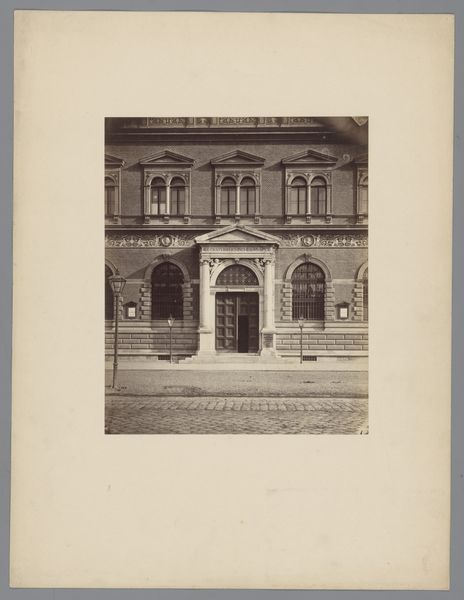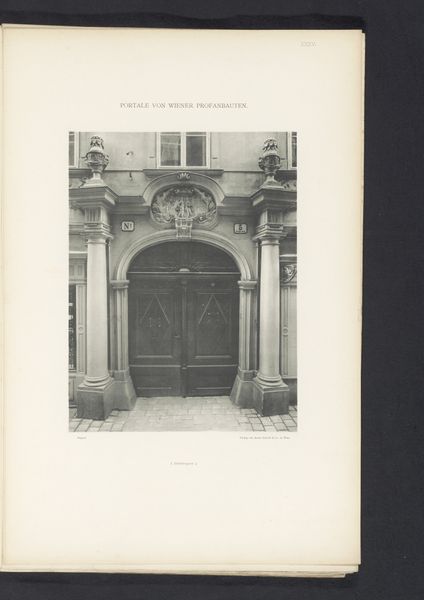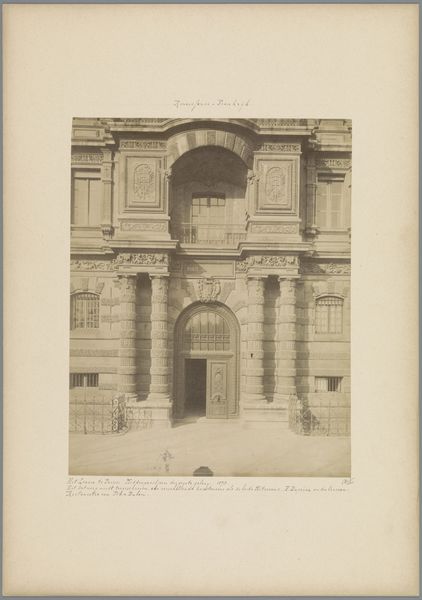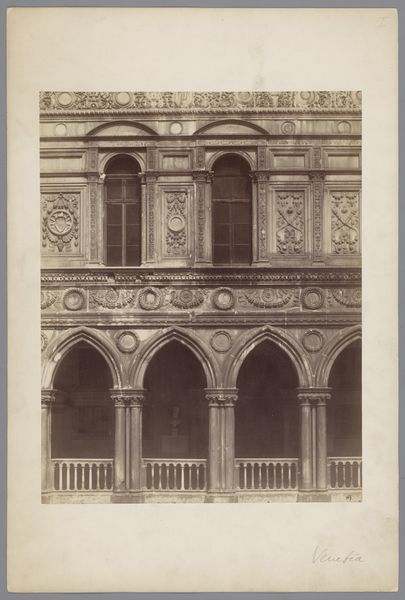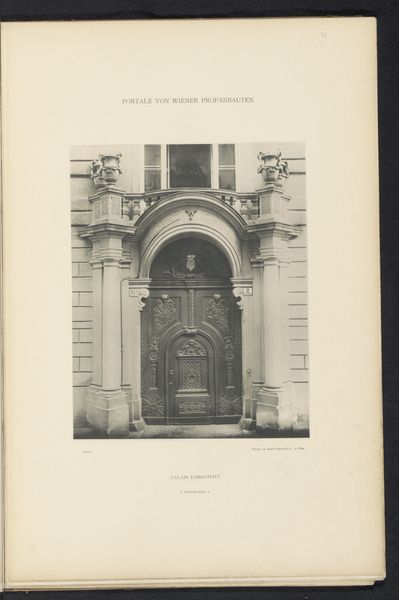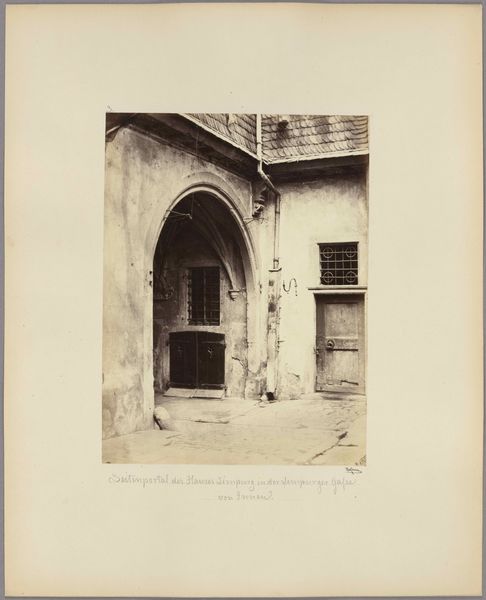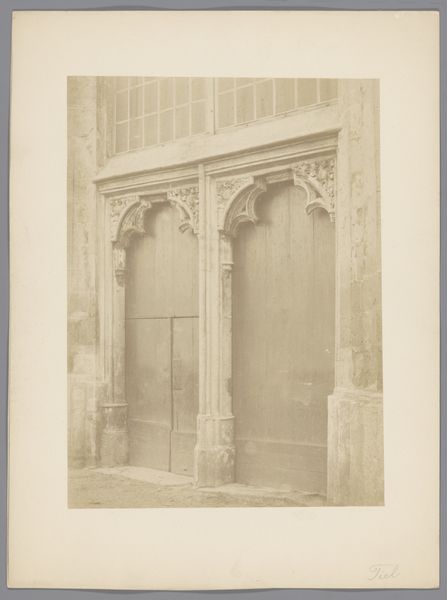
Dimensions: height 246 mm, width 190 mm
Copyright: Rijks Museum: Open Domain
Editor: Here we have an anonymous photograph, titled "Poort van Palais Larisch-Mönnich te Wenen," placing it in Vienna, likely taken between 1875 and 1900. It looks like a printed photograph showing the grand doorway. It's a very imposing entrance! What strikes you most about this image? Curator: Immediately, I am drawn to the geometric clarity of the architectural elements. Note the careful arrangement of rectangular blocks forming the pillars, which directly contrasts with the curved arch above the door, creating a fascinating visual dialogue. The print is almost monochromatic which emphasizes texture and form above all else. Editor: I see what you mean. The textures are pretty great, from the stone to the woodgrain on the door! Is there any meaning in these contrasts? Curator: The contrast directs the eye, and is quite purposeful. Semiotically, the solidity of the stone represents permanence and stability, commonly associated with Neoclassical architecture. This choice reinforces notions of order and reason, favored during that movement, wouldn't you agree? Editor: That makes sense. So the choice of forms tells as much a story as any narrative content would? Curator: Precisely. Note how the photograph’s composition draws focus to the point of entry. Even in two dimensions, you appreciate the play of light and shadow. It all gives significant visual weight to this portal. What emotional response does this provoke for you? Editor: It feels formal and imposing. A sense of entering somewhere important. What about you? Curator: Indeed, I am left considering how the formal elements of architecture reflect societal values. What appears at first a simple documentation reveals far more through structured design. Editor: Absolutely. It's interesting to see how much can be conveyed just through shape, texture and light!
Comments
No comments
Be the first to comment and join the conversation on the ultimate creative platform.
